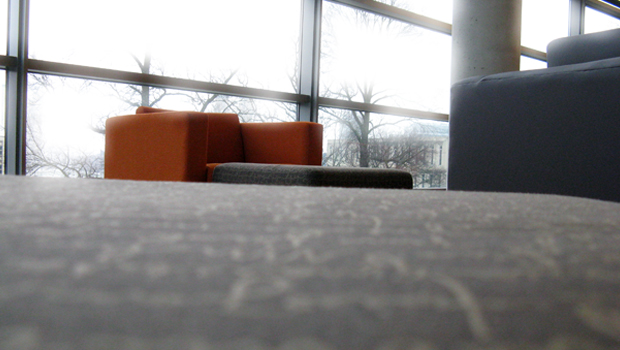

 M. Remi Yergeau
M. Remi Yergeau
University of Michigan
myergeau@umich.edu
It always begins with the same question: Is it me, or is it them?
I ask myself this at prospectus defenses, when I lose the ability to verbalize. I ask myself this at university gatherings, when I sit unsociably in a forgotten corner. I ask myself this at conferences, when, quite suddenly, I cease hearing the words around me, and my senses jumble into a series of cascading fogs—sounds become pain, pain transforms into the taste of copper, the floor sways like bad opera, there are threes in my ears and words smell like shit. I ask myself this when I miss a deadline. I ask as often as I breathe. The question emerges every time I drop a conversation, stammer while teaching, flap or tic or do otherwise pathological things with my hands. Midday, I will find myself sitting on a bathroom floor, crying, wondering if people like me just aren’t meant for this job, if people like me really do belong in institutions, if people like me should even exist. Is it me? I imbibe this refrain so often that I now qualify for an OCD diagnosis. [1]
I am not writing here to suggest that I have an answer. I am writing here because so few colleagues recognize that the problem is not me.
As my co-authors have suggested, what we need is a new theory of access—a theory that accounts for kairotic spaces, a theory that elides retrofitting, a theory that disables archly held notions about modality and the human sensorium. My argument—or my problem, if you will—is about practices rather than conditions. It is about accommodations and reason; it is about forced invisibility and the exclusion of disabled people from the design of social and virtual spaces.
Whether in our scholarship or our departmental meetings, the discourse on disability and access often takes shape, linguistically speaking, as accommodation. As someone who receives accommodations, I do not take up this argument lightly, nor do I suggest that people and institutions should dispense with accommodations altogether. Rather, I am suggesting that our institutional conceptions of accommodation are predicated on problemed bodies and spaces rather than problemed infrastructures and practices. To accommodate is to retrofit; it is to assume normative bodies as default and to build spaces and infrastructures around those normative default bodies; it is to deal with deviant bodily and spatial conditions as they bubble out at the seams. Accommodation is, as Rob Imrie (1998) described, a subtle yet potent form of "design apartheid," an ideological "system that methodically excludes disabled bodies" (Siebers, 2008, p. 84).
My critique of accommodation-as-construct is not without precedent. Kimber Barber-Fendley and Chris Hamel (2004) contended that, as a metaphor, accommodation forces an either–or choice of disclosure or exclusion on the part of disabled people. Likewise, they lambast the notion that accommodations level the playing field. This playing field, they contend, signifies an able-bodied trope that relies on a "vague definition of fairness" (p. 505). My own critique goes further, however—for the very idea of a playing field suggests that accommodation is both immediate and idiosyncratic; it suggests that accommodating is a matter of tinkering with people and places until they fit just right. Paul Collins (2008) captured this sentiment well, I think, with the following line: "the problem with pounding a square peg into a round hole is not that the hammering is hard work. It's that you are destroying the peg" (p. 225).